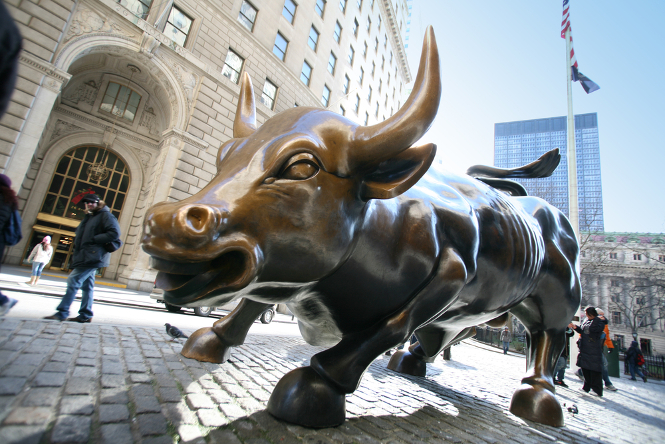
Moneymen have a storied history of causing mischief in the markets. So when the American journalist Michael Lewis said there was something fishy about Wall Street’s use of high-frequency algorithms, it had more than a whiff of plausibility.
According to Lewis, who had conducted lengthy interviews with the Royal Bank of Canada’s head of electronic sales Brad Katsuyama, the titular flash boys had been using speedy algorithms to rig the markets.
This was done by waiting for orders to be placed and using fast computers to jump ahead of the processing queue, bumping the price. Whilst the differences were marginal on each trade they added up, dumping costs on investors trading more slowly.
The predictable outcry shook markets around the world, launching enquiries from the US Department of Justice and FBI, and leading a group of pension funds to launch a civil suit against the New York Stock Exchange, Nasdaq and Bats Global Markets.
It seemed like the end of the road for high-frequency trading. But one year later, just how has it fared?
A flash in the pan?
Perhaps the first victim of Flash Boys’ publication was the high-frequency trading firm Virtu Financial. Launched in 2008 in New York, the company had to delay its initial public offering (IPO) in the wake of the book’s release, with the regulators circling overhead.
Almost a year exactly after the furore began a Virtu IPO is back on the table, with the company valued at $2.6bn (£1.75bn) and planning to raise $314m (£211m), according to its filing with US securities. Should it go ahead, Virtu will be the first publically listed high-frequency trader in the world.
Outside of the States the flash boys have been making advances. Only this week the Australian Financial Review reported that internationally funded high-frequency traders had moved into the Australian Securities Exchange, much to the complaint of less capitalised firms.
On the other side of the world the London Stock Exchange has also been affected. Despite predictions last May that the market’s low exposure to high-frequency trading would insulate it from the regulatory pressures in the US, in November the exchange proposed a midday freeze to markets to allow people to trade without the traders being undercut.
In the political sphere high-frequency traders have also been active, with one group forming the Modern Markets Initiative, a US lobby group put together to defend the interest of high-frequency traders in Washington DC. Initially on the back foot, the flash boys have made ground.
Regulatory heat
But life in high-frequency trading has not been entirely positive since Lewis’s book rolled off the presses. At the start of this year the Swiss bank UBS agreed to pay $14.4m (£9.8m) in response to a probe by the US Securities and Exchange Commission (SEC) over its "dark pools", a private stock exchange.
The commission alleged that UBS had failed to inform all of its customers about a certain type of order, leading high-frequency trading firms to benefit. Similar accusations have been levelled against the Barclays by New York State’s attorney general Eric Schneiderman, which are denied by the British bank.
In March the Chicago trading firm HTG Capital Partners also launched a suit against an unnamed rival alleging that they had been "spoofed", with prices sharply rising or falling in a split-second after a trade was made. What is notable about the case is that HTG is itself a high-frequency trader, and has detailed almost 7,000 spoofing instances in the suit.
As Eric Hunsader of the research group Nanex told the IB Times: "It’s a little stunning. High-frequency traders always say spoofing doesn’t happen, but here you have a high-frequency firm saying it happened thousands of times."
Making an honest market
In a congressional hearing in April 2014 the SEC chair Mary White was quizzed on Flash Boys, and whether the allegations of rigging were true. She replied: "The markets are not rigged."
Evidence from the academic sphere has also disputed the effects of high-frequency trading on the markets. Last year a paper from the Eastern Finance Association studied the relationship between transaction costs and high-frequency trading between 2007 and 2011, but could find no link.
"The general decline in execution costs and our failure to find a relationship between HFT and execution costs do not support the need for strong regulation of HFT," it said. However it did add that further study was needed to see whether some traders were being disadvantaged.
The evidence from Lewis, and indeed much of the success of high-frequency traders, would seem to indicate that there is a problem. Whilst regulators, governments and stock markets have somewhat clamped down on the practice, it appears to be flourishing.
This would not be the first time that the financial industry, from Wall Street to the City of London, has looked after its own. Yet for Lewis the point of his book was that there is still some hope that the markets can make themselves honest if more people like Brad Katsuyama, who blew the whistle on the practice, came to the fore.
"That some minority on Wall Street is getting rich by exploiting a screwed-up financial system is no longer news," Lewis wrote in Vanity Fair.
"That is the story of the last financial crisis, and probably the next one, too. What comes as news is that there is now a minority on Wall Street trying to fix the system."






